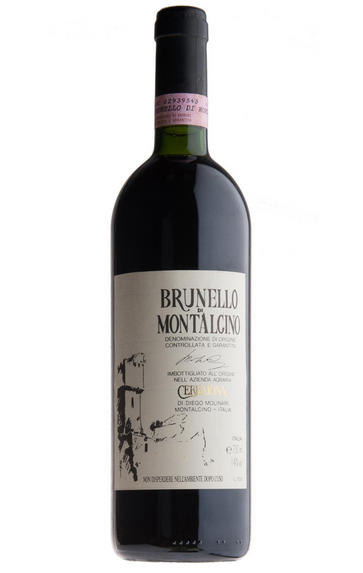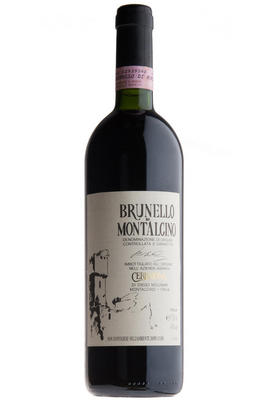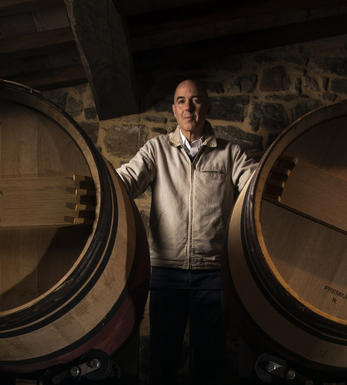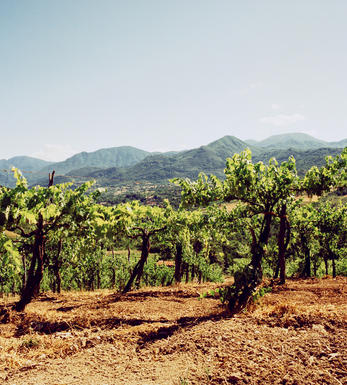
2012 Brunello di Montalcino, Cerbaiona, Tuscany, Italy

Critics reviews
Monica Larner - 28/02/2018
Drinking window: 2020-2036
Walter Speller, jancisrobinson.com, 21 March 2016
About this WINE

Cerbaiona, Tuscany
In 2015 the tiny property of Cerbaiona, tucked away off the Torronieri road southeast of Montalcino changed hands. Since 1977, owner Diego Molinari had built up the property from scratch, planting three hectares of vines on east-facing historic vineyards at an altitude of 350 metres above sea level. Whole-heartedly embracing an artisan, hands-off artistic approach he brought the estate to cult status, recognised for wines capable of reaching extraordinary heights.
Its new owners, however, under the leadership of founding partner Matthew Fioretti, felt that the only way the wines would show the full potential of their unique vineyards was for the estate to be entirely recreated, both in the vineyards and in the winery. It is hard to convey the astonishing attention to detail and commitment to quality that Fioretti is applying to every aspect of wine production and also to the renovation of the property itself.
The original three hectares of vineyards have been entirely replanted with new clones, a process completed in 2021, including an additional one-hectare plot on their steepest slope that was previously planted with olive trees. This, Matthew believes, will prove to be the finest plot of the estate. Mirroring his meticulous and reflective rather than formulaic approach, plantings were made with a variety of different vine spacing and densities, and different training systems adapted to the individual characteristics of each plot. The vineyards have also been converted to organic viticulture. Integrated underneath the historic property, a state-of-the-art new winery was completed in 2021.
In his own words, Matthew’s approach is firmly ‘more of a craft than an art’, with the goal to produce wines with less extraction and more purity. As with any true craft however, there is an inevitable process of evolution and refinement, and in the case of Matthew, this is allied to refreshingly honest self-appraisal and seemingly inexhaustible energy.
Fittingly he has chosen to also apply his fresh, independent-thinking to wine journalists and the process of scoring wines. In asking journalists not to apply a point-rating to his wines, he hopes that his wines will be defined by their inherent qualities and unique characteristics. For him, a points score is a number that ‘detaches critics and consumers from the beauty and real nature of wine and moreover, removes (them) from the work and insight of those who grow grapes and produce wine…a wine should instil wonder and curiosity’.
Welcome to the new Cerbaiona. An estate transformed, but one which is only at the beginning of its journey.

Brunello di Montalcino
Along with Chianti, Brunello di Montalcino is Tuscany's most famous DOCG and the region's boldest expression of Sangiovese. Located 30 miles south of Siena with the hilltop town of Montalcino as its epicentre, its 2,000 hectares of vines are naturally delimited by the Orcia, Asso and Ombrone valleys. Brunello is the local name for the Sangiovese Grosso clone from which Brunello di Montalcino should be made in purezza (ie 100 percent).
The Brunello di Montalcino DOCG has a whale-like shape: at its head, at 661 metres above sea level on ancient, stony galestro soils facing east and southeast lies the town of Montalcino, where the DOC was founded. As you follow the spine south towards the tail, the vineyards lose altitude – those around Colle Sant'Angelo are at 250 metres – while the soils become richer with iron and clay. Further east, in the shadow of the 1,734 metre Mont'Amiata lies the village of Castelnuovo dell'Abate where the vineyards are strewn with a rich mix of galestro, granitic, volcanic, clay and schist soil types.
Historically, the zone is one of Tuscany's youngest. First praised in 1550 by Leandro Alberti for the quality of its wines, it was Tenuta Il Greppo who bottled the inaugural Brunello di Montalcino in 1888. By 1929, the region had 925 hectares of vines and 1,243 hectares of mixed crops, while in 1932 it was decreed that only those wines made and bottled within the commune could be labelled as Brunello di Montalcino. Since then, the number of producers has risen from 11 in 1960 to 230 in 2006, while over the same period the vineyards have expanded from 1,000 hectares to 12,000. The region earned its DOC in 1966, and was upgraded to DOCG in 1980.
Brunello di Montalcino cannot be released for sale until five years after the harvest, or six years in the case of Brunello di Montalcino Riserva. During this time the wines should be aged for at least two years in oak, followed by at least four months in bottle (six months for Riservas); maximum yields are 55 hl/ha.
Rosso di Montalcino is declassified Brunello di Montalcino, released for sale 18 months after the harvest.
Recommended producers: Costanti, Fuligni, Lisini, San Giuseppe, Soldera, Cerbaiona

Sangiovese
A black grape widely grown in Central Italy and the main component of Chianti and Vino Nobile di Montepulciano as well as being the sole permitted grape for the famed Brunello di Montalcino.
It is a high yielding, late ripening grape that performs best on well-drained calcareous soils on south-facing hillsides. For years it was blighted by poor clonal selection and massive overcropping - however since the 1980s the quality of Sangiovese-based wines has rocketed upwards and they are now some of the most sought after in the world.
It produces wines with pronounced tannins and acidity, though not always with great depth of colour, and its character can vary from farmyard/leather nuances through to essence of red cherries and plums. In the 1960s the advent of Super Tuscans saw bottlings of 100% Sangiovese wines, as well as the introduction of Sangiovese/Cabernet Sauvignon blends, the most famous being Tignanello.


Buying options
Add to wishlist
Description
Deep ruby with a narrow orange rim. Cool fruit and herbs on the nose. Remarkable sweet and ripe fruit on the attack with firm, bitter tannins. A successful balancing act, showing great concentration while keeping perfect focus and poise.
Drinking window: 2020-2036
Walter Speller, jancisrobinson.com, 21 March 2016
wine at a glance
Delivery and quality guarantee